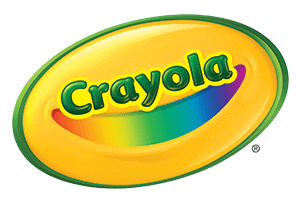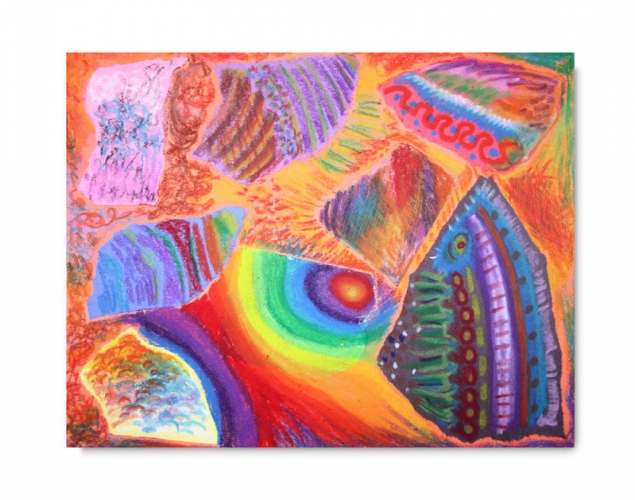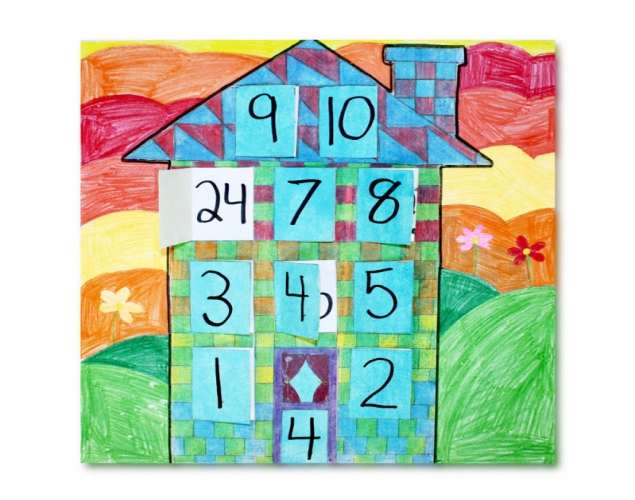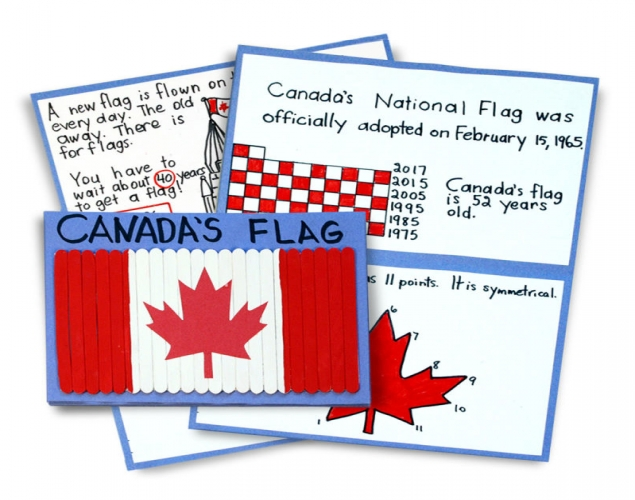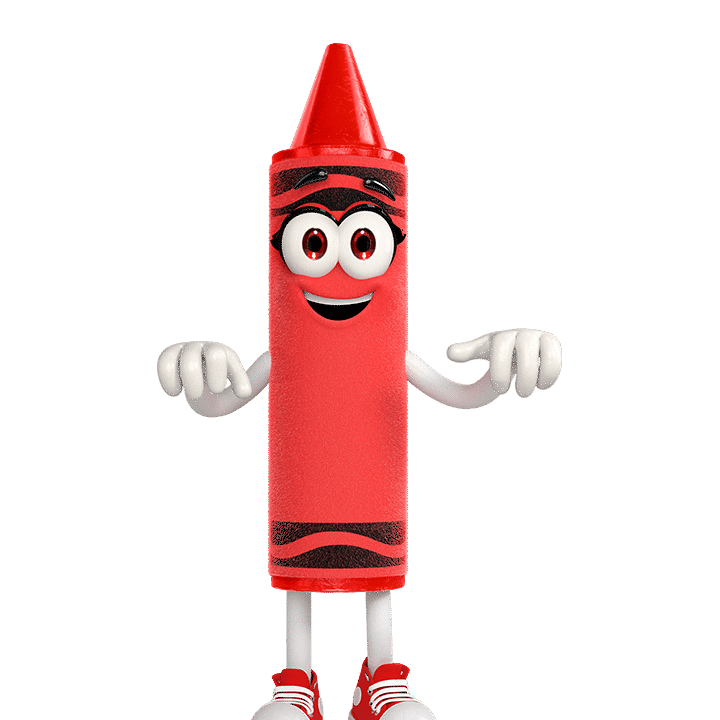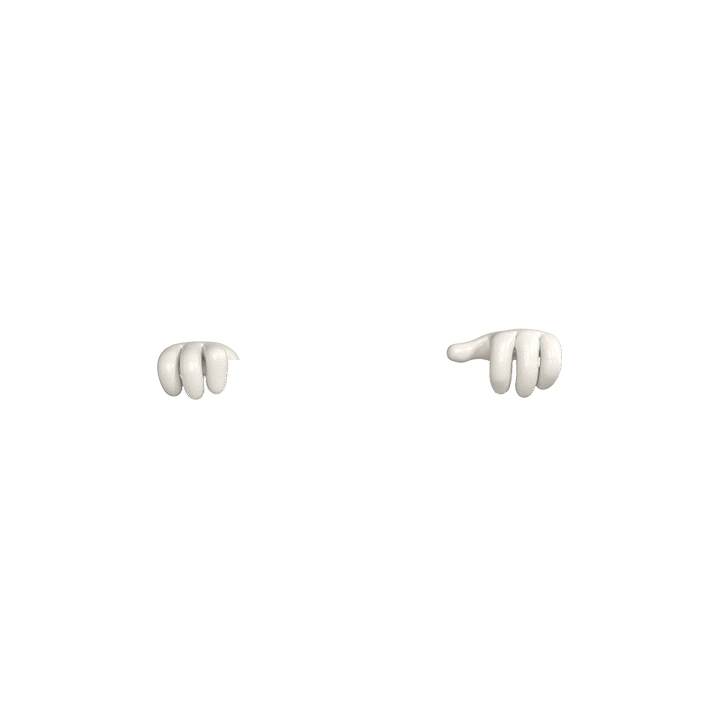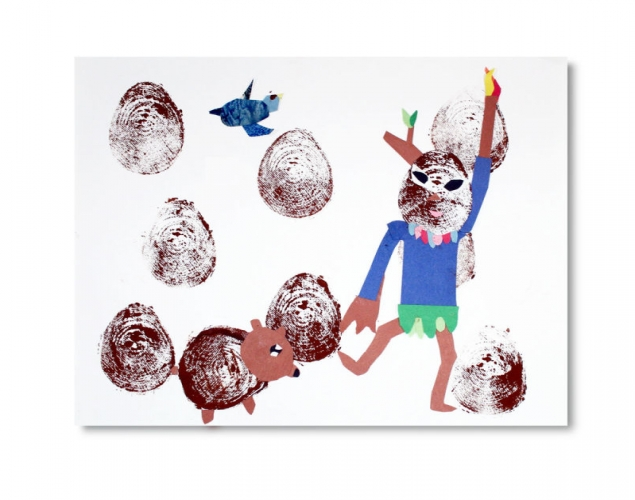
Supplies:
- Crayola Construction Paper - 22.9 cm x 30.5 cm (9" x 12")
- Crayola Oil Pastels - 16 Count
- Crayola Washable Glue Sticks
- Toothpicks
- Paper Towels
Steps:
1
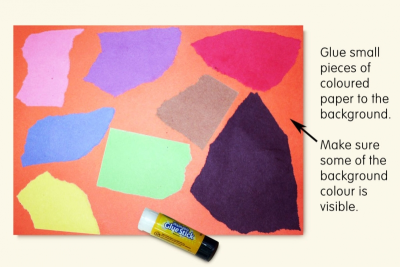
- Choose one colour paper for the background.
- Tear small shapes of each of the other colours and glue them onto your background paper.
- Make sure some of the background colour is visible.
2
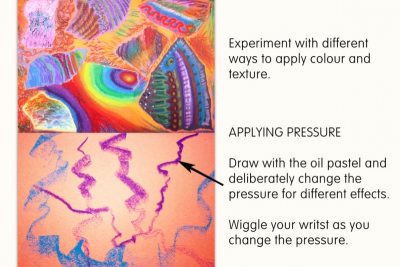
Experiment
- Use all the colours in your oil pastel box in one way or another.
- Experiment with ways to apply colour and texture.
Applying Pressure
- Draw with the oil pastel and deliberately change the pressure to get different effects.
- Wiggle your wrist as you change the pressure.
3
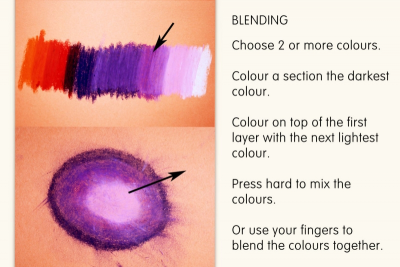
Blending
- Choose two or more colours.
- Colour a section with the darkest colour.
- Colour on top of the first layer with the next lightest colour.
- Press hard to mix the colours.
- Or use your fingers to blend the colours together.
4
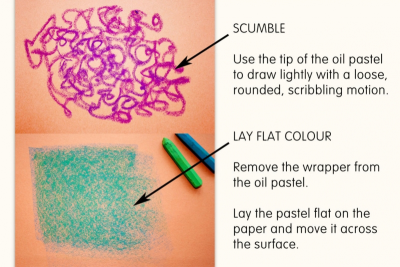
Scumbling
- Use the tip of the oil pastel.
- Draw lightly with a loose, rounded, scribbling motion.
- Scumble directly on the paper or lay down a base coat colour first and then scumble over it.
Laying Flat Colour
- Remove the wrapper from the oil pastel.
- Lay the pastel flat on the paper and move it across the surface.
- Change the pressure to get different effects.
5
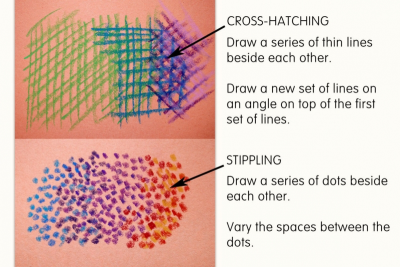
Cross-Hatching
- Draw a series of thin lines beside each other.
- Draw a new set of lines on an angle over top of the first set of lines.
- Use the same colour for each set of lines or change colours for a different effect.
Stippling
- Draw a series of dots beside each other.
- Vary the spaces between the dots to change the intensity of the colour.
- Draw different coloured dots among the first set to shift from one colour to the next.
6
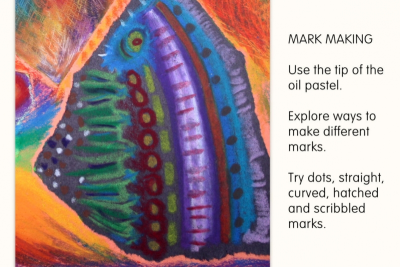
Mark Making
- Use the tip of the oil pastel.
- Explore ways to make different marks.
- Try dots, straight, curved, hatched and scribbled marks.
7
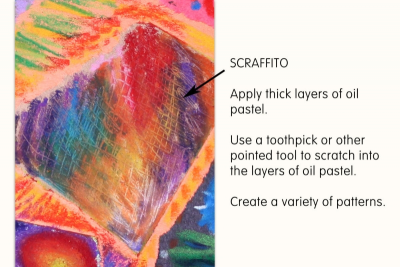
Sgraffito (Scratching into the oil pastel)
- Apply thick layers of oil pastel.
- Use a toothpick or other pointed tool to scratch into the layers of oil pastel.
- Create a variety of patterns.
8
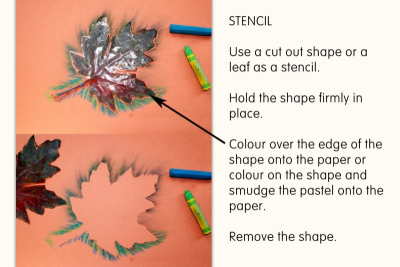
Stencil
- Use a cut out shape or leaf as a stencil.
- Hold the stencil firmly in place.
- Colour over the edge of the stencil onto the paper, or colour on the shape and smear the pastel onto the paper with your finger.
- Remove the stencil.
9
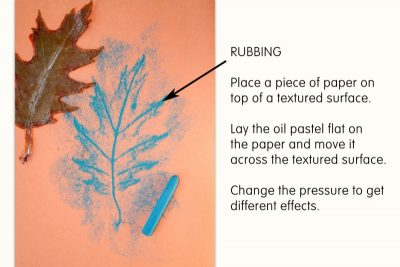
Rubbing
- Place a piece of paper over a textured surface.
- Remove the wrapper from the oil pastel.
- Lay the oil pastel flat on the paper and move it across the textured surface.
- Change the pressure to get different effects.
10
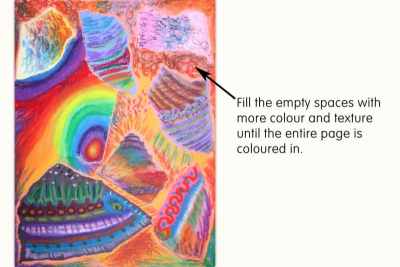
- Fill the empty spaces with more colour and texture until the entire page is coloured in.
- Glue your finished experiment sheet into your sketchbook.
- Write your comments about 4 sections of the design.
- What do you like best about this section? Why?
- How would you use the techniques in this section in an artwork?
- What effect does the coloured paper have on the way the oil pastel looks?
Subjects:
Grades:
Grade 3,
Grade 4,
Grade 5,
Grade 6,
Grade 7,
Grade 8,
Grade 9,
Grade 10
